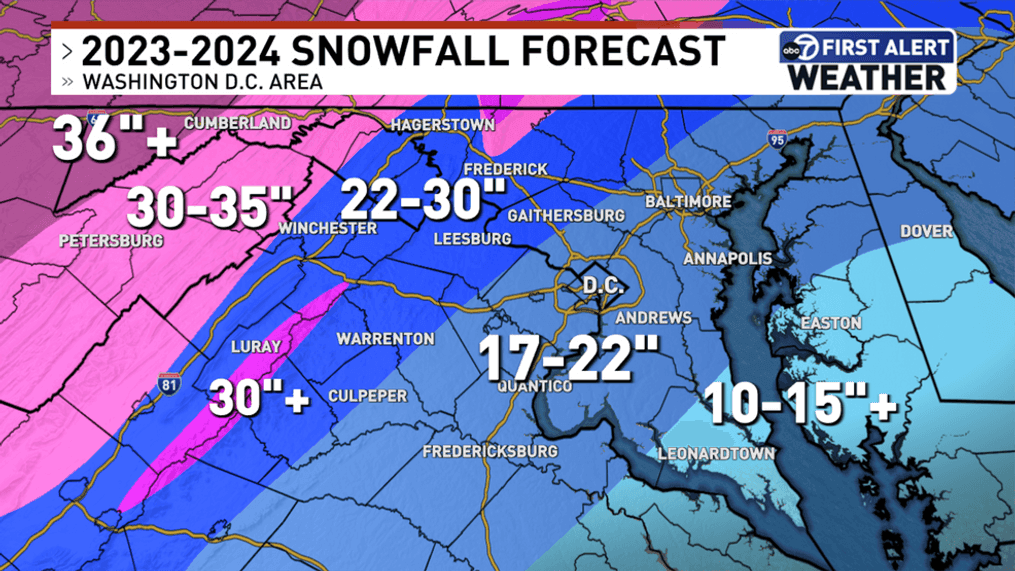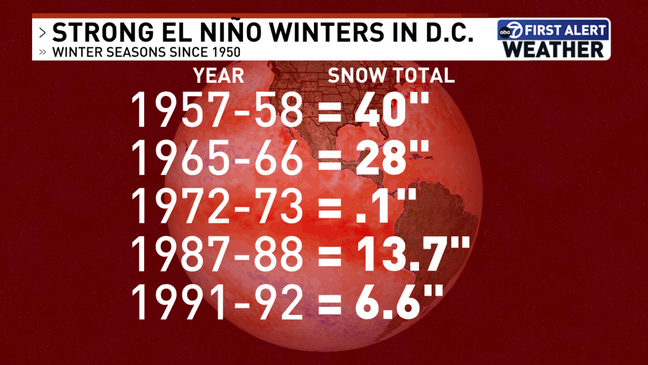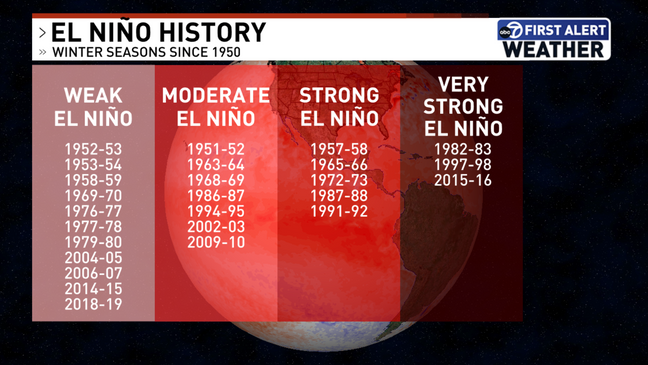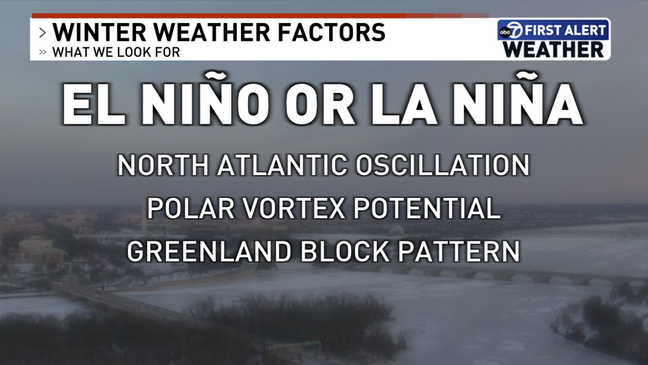First Alert Winter Weather Forecast: How much snow can DC expect and when will it fall?
ARLINGTON, Va. (7News) — Peak fall foliage has come and gone, which means winter is right around the corner for the DMV region. Here's what to expect with your First Alert Weather Team's Winter Weather Forecast.
The National Oceanic and Atmospheric Administration (NOAA) first indicated that an El Niño was developing back in June. El Niño is when warm waters are present around the equatorial Pacific Ocean. These warm waters cause far-reaching weather impacts across the globe that peak during the winter months. Since then, NOAA has upgraded the outlook which now includes a greater than 55% chance of strong El Niño lasting through March 2024. This will be our first El Niño winter in 4 years, and the first strong El Niño in 7 years.
RELATED | NOAA's winter outlook is out: Will we see snow in the DMV?
Jon Gottschalck, Chief of the Operational Prediction Branch of NOAA's Climate Prediction Center, says that while each El Niño event is different, this year's winter weather outlook did heavily rely on past El Niño events. Strong El Niño impacts for the D.C. area include above-average precipitation (rain and snow) as well as above-average temperatures.
While El Niño will play a role in our winter weather this year, it won't be the only factor that does.
Other phenomena such as the North Atlantic Oscillation (NAO) index, which monitors pressure differences between the Subtropical High over the Atlantic, and the Subpolar Low. According to NOAA, positive or negative phases of the NAO are usually associated with above-average temperatures for the eastern half of the United States. While negative phases are associated with below-average temperatures for the same area. The latest update has the NAO in a negative phase since about June.
Another factor we will be monitoring in the weeks and months ahead is the placement of the Greenland Block. This is an area of high pressure that sets up over Greenland and then forces the jet stream to dip south along the East Coast, allowing for cold air outbreaks that come down from Canada.
Winter weather conditions are getting increasingly difficult to forecast as impacts from climate change continue to worsen. Climate Matters research indicates that winter is our fastest warming season, our coldest days are no longer as cold as they used to be, and cold snaps are becoming more infrequent. For the last 50 years, winters have warmed 3.1 degrees on average.
Over the last 5 years, we've either come in well below or well above our average of about 13.5". Winter 2021-2022 we got within just a few tenths of an inch away from our average snowfall.
So here is what your First Alert Weather Team is forecasting. More snow this winter than any other season over the last 5 years.
February is looking like our most active month for snowfall.



